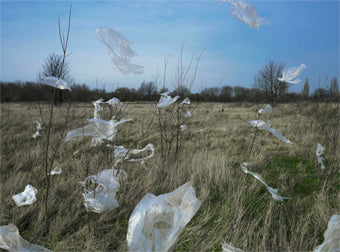

Microplastics in Drinking Water: What You Need to Know — and How to Protect Yourself
Microplastics — tiny particles of plastic less than 5mm in size — have become an invisible part of our daily lives. They’re in our oceans, our food chain, and increasingly, our drinking water.
The World Health Organization (WHO) has flagged this as a growing concern, calling for deeper investigation into the long-term health effects of plastic exposure.
At Ionza, we believe clean water is the foundation of vibrant health. Here’s what you need to know — and how you can take action to reduce your exposure today.
💧 How Did Plastics Get in Our Water?
Recent studies found that:
-
Over 90% of bottled water brands tested contain microplastic particles【The Guardian】
-
Around 90% of tap water samples worldwide also contain traces of plastic【WHO】
-
Even rainwater isn’t safe — researchers found microplastics falling from the sky in remote mountain ranges like the Pyrenees【National Geographic】
Microplastics come from the breakdown of larger plastic items like bottles, bags, cosmetics, and synthetic clothing. Once in the environment, they enter the air, soil, food supply, and water systems — sometimes traveling for hundreds of kilometers.
🧪 Microplastics vs. Nanoplastics
-
Microplastics: 0.1–5,000 microns in size
-
Nanoplastics: 0.001–0.1 microns (even smaller, more reactive)
These particles are concerning not just because of their size — but because they can carry toxic pollutants like heavy metals and endocrine-disrupting chemicals (e.g., BPA, phthalates, flame retardants). These contaminants may interfere with hormone balance and contribute to conditions such as:
-
Reduced fertility and semen quality
-
Thyroid and neurobehavioral disorders
-
Hormone-related cancers (breast, prostate, testicular)
-
Early puberty in girls
-
Rising rates of obesity and type 2 diabetes【WHO, EFSA】
🧬 What Do Scientists Know So Far?
The full health impact of micro- and nanoplastics is still being studied. But what we do know is concerning:
-
Lab studies show microplastics may disrupt hormone signalling in animals
-
Nanoplastics have been shown to cross intestinal cell walls
-
Aquatic species exposed to plastic particles show altered behavior, immune disruption, and tissue damage
What does that mean for humans? We don’t yet fully know. But many health practitioners agree: when in doubt, reduce your exposure.
🚰 Ionza’s Solution: Advanced Filtration for Microplastics & More
At Ionza, we offer next-generation water systems designed to protect your home from microplastics, nanoplastics, and other contaminants — while remineralizing and revitalizing your water for optimal health.
Here are four of our most trusted systems:
1. IONZA Water Enricher RO + Mineralizing System
For those needing comprehensive filtration, including fluoride, heavy metals, and microplastics, this RO-based system combines:
-
Reverse osmosis for ultra-fine contaminant removal
-
Re-mineralization cartridges to restore essential alkaline minerals
-
Advanced pre- and post-filtration to optimize taste and structure
Perfect for city or bore water with high contaminant loads.
➡ View the IONZA Water Enricher →
2. ALKA FLOW Benchtop Water Filter System
A compact, user-friendly benchtop system ideal for families looking for everyday filtration without installation.
-
Filters chlorine, heavy metals, and microplastic particles
-
Includes alkalizing minerals to promote pH balance
-
Great for renters or those seeking a countertop solution
3. ALKA CITY Total City Filter + Alkaline Mineral Ionizer
Designed specifically for urban tap water, this robust under-bench system handles:
-
Chlorine, chloramine, and VOCs
-
Microplastics and pharmaceuticals
-
Alkalizing minerals for enhanced cellular hydration
A great solution for households on city supply seeking long-term protection.
➡ Discover ALKA CITY →
4. ALKA ULTRA X Rural Filter + Alkaline Mineral Ionizer
Engineered for rural or tank water, this system combines:
-
Bacteria, cyst, and microplastic removal (down to 0.01 microns)
-
Advanced sediment filtration
-
Remineralization and ionization for energised, alkaline water
Ideal for off-grid homes, farms, or rainwater users.
➡ Learn More About ALKA ULTRA X →
💡 Taking Action: Empowerment, Not Panic
While we can’t control everything in our environment, we can take meaningful steps to protect our families and reduce toxic load — starting with the water we drink every day.
"The body can do amazing things when it's supported well. Clean water is a powerful place to start."
— Joseph Blessing, Ionza
📚 Sources:
⚠️ Disclaimer
This information is for educational purposes only and does not replace medical advice from your doctor or healthcare professional. Some views expressed may differ from official public health guidance but are supported by independent scientific research.








